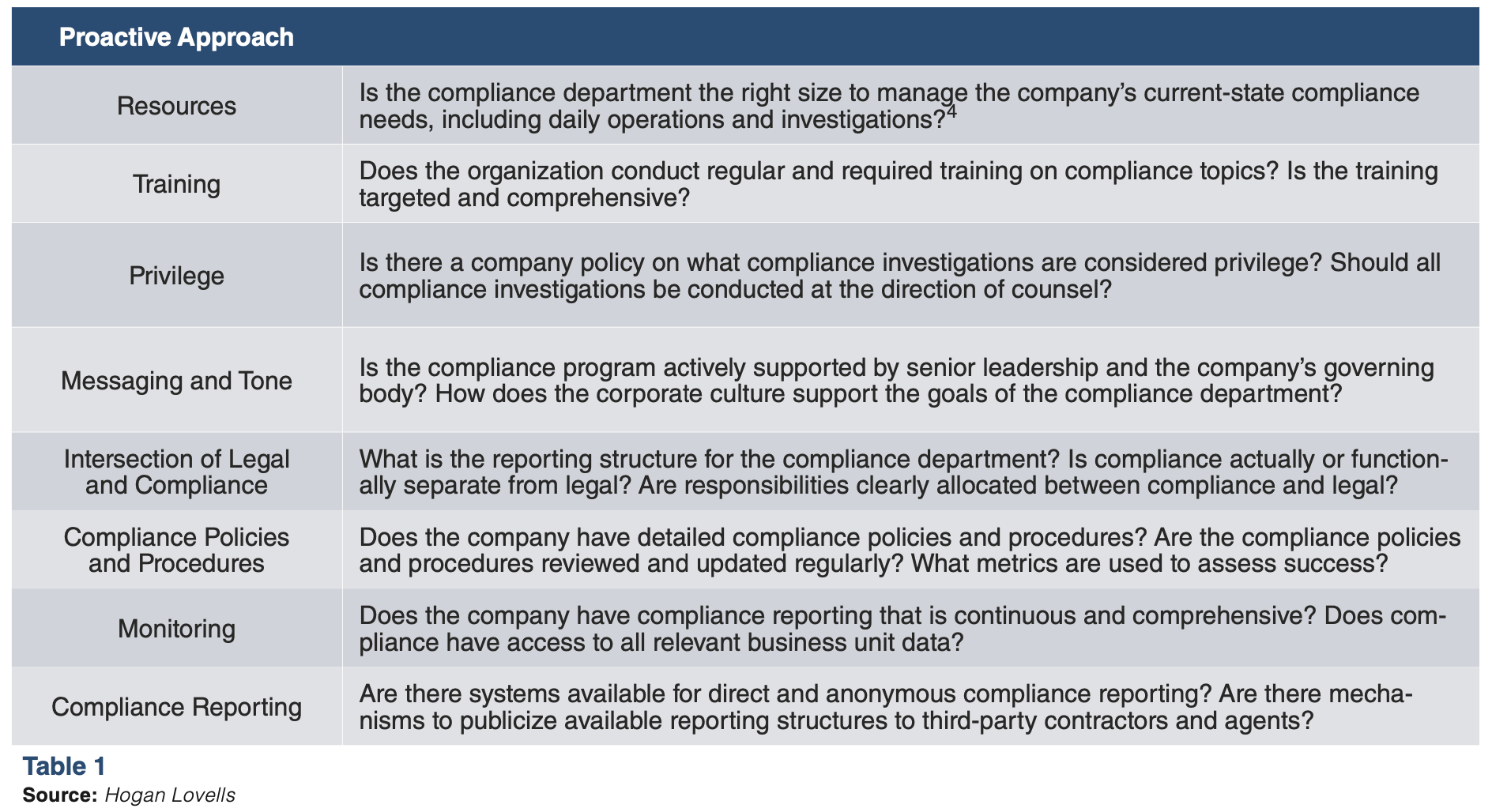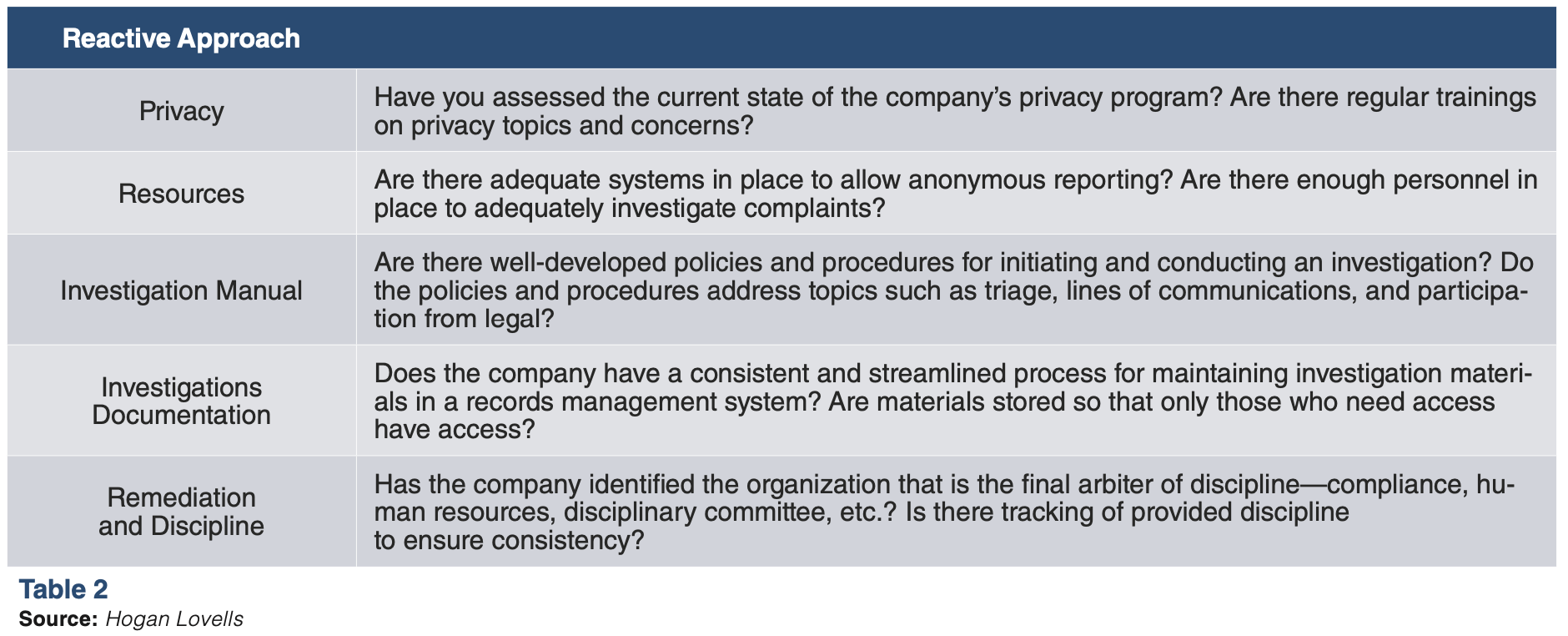Dynamic Compliance: The Best Defense for Pharma
A proactive and tailored compliance department—with the nimbleness to adapt strategies on the fly—is a critical shield for life sciences companies during government investigations.

Life sciences companies are consistently in the spotlight for potential violations of criminal or civil fraud laws. The fact that the life sciences industry is also a highly regulated enterprise, with marketing and pricing particular areas of scrutiny, adds another layer of complexity and potential risk. Given the large share of federal spending on healthcare, the Department of Justice’s (DOJ) focus on the sector will remain a constant. For example, in 2021, $5 billion of the $5.6 billion in False Claims Act (FCA) settlements and judgments related to the healthcare industry.1
With this continued spotlight, how should CEOs and senior leaders respond? The key is to proactively prepare for potential FCA investigations and maintain a dynamic compliance organization.
Compliance is closely routinized in many government investigations and is often essential to avoiding potential liability. A dynamic, evolving compliance organization is structured so that it is responsive and adaptive to the company’s needs and the expectations of government regulators. In that way, it is both proactive and reactive. It looks forward by efficiently monitoring and assessing the company’s operations to recognize gaps and challenges. It is also appropriately backward-looking by conducting thorough investigations when issues arise that document potential misconduct or systemic failures, and fixes them moving forward. Even more, a dynamic organization that changes over time is best positioned to respond to the ever-changing industry and government compliance expectations.
Let’s now address not only what a good compliance organization looks like, but how life sciences leaders can assess their own compliance functions to make them more proactive and tailored to individual organizational and industry demands.
What does a dynamic compliance organization look like?
Leaders in the biopharmaceutical sector can find guidance from the DOJ and Department of Health and Human Services (HHS). The DOJ asks three questions in assessing the effectiveness of a compliance organization:2
- Is the corporation’s compliance program well-designed?
- Is the program being applied earnestly and in good faith?
- Does the organization’s compliance program work
in practice?
The HHS Office of the Inspector General (OIG) describes the seven elements of an effective compliance program:3
- Implementing written policies and procedures
- Designating a compliance officer and compliance
committee - Conducting effective training and education
- Developing effective lines of communication
- Conducting internal monitoring and auditing
- Enforcing standards through well-publicized disciplinary guidelines
- Responding promptly to detected problems and undertaking corrective action.
These elements form the basis of what regulators expect of a strong compliance organization. Having systems that are responsive to these questions or considerations can prove to be a mitigating factor for prosecutors or regulators if misconduct is identified or investigated.
However, these three questions and seven elements can be boiled down more simply: Is your compliance organization able to be effective both proactively and reactively?
A well-functioning proactive organization is designed so that it has systems in place that are regularly applied and able to catch systemic failures, bad faith actors, or oversights. It is designed to be proactive in identifying potential concerns, and responsive to changes in government requirements or industry standards. This organization should have:
- Sophisticated data monitoring with continuous access to all relevant data
- Clearly allocated responsibilities between legal and compliance
- Robust onboarding, training, and education programs
- Strong compliance culture and messaging from the top of the organization
A well-functioning reactive organization can conduct investigations and show that its compliance program is designed to respond quickly to crises, and adequately and consistently manage the internal and external consequences. This company should have:
- Adequately resourced and well-trained investigations staff
- Substantial investigation manuals and systems to triage and prioritize investigations
- A streamlined process for saving and storing documentation about investigations
- Strong and consistent systems of remediation and discipline with formalized procedures and precedent
Assessing your company’s current state
Moving your compliance organization to best practices should begin with regular organizational assessments. Compliance and audit committees of publicly traded life sciences companies often require such reviews to assess the current state of the compliance organization and identify strengths and weaknesses. In our assessments of compliance departments on behalf of life sciences companies, we take into account government guidance on effective compliance programs to develop a set of topics and areas to assess, including but not limited to:
- DOJ guidance on effective compliance programs
- OIG’s seven elements of an effective compliance program
- Healthcare Compliance Association’s and OIG’s Compliance Program Resource Guide
- Sample OIG corporate integrity agreements
- Section 8B2.1 of the US Sentencing Commission Guidelines Manual
These resources provide potential evaluation criteria against which senior leadership can assess their current compliance program. Based on that guidance, specific proactive and reactive topics to evaluate appear in Table 1 and Table 2 below.


In a recent assessment of a life sciences company, we examined its compliance department across these organizational levers. We look at compliance documentation, policies and procedures, code of business conduct and ethics, annual monitoring reports, etc. Additionally, we interview company leaders inside and outside the compliance organization to assess how the compliance function is integrated into the company’s corporate culture.
Conducting these types of reviews allows a company to develop a strong view of the compliance organization and prioritize areas of improvement within the compliance department. This type of assessment allows organizations to be proactive in addressing gaps in compliance and more prepared to address future compliance challenges as businesses grow or find themselves in different market circumstances.
Importantly, having an effective and functional compliance program can provide a company with much-needed credibility in the face of a government investigation. For example, in an FCA investigation, an effective compliance program may help the company avoid a Corporate Integrity Agreement or, even worse, permissive exclusive from the federal healthcare program if it convinces the agency of its effectiveness going forward.
Like the life sciences field itself, compliance rules and regulations are everchanging and adapting—and require leaders to stay ahead. Building an organization that can adapt and evolve based on its specific needs will ensure that the company is built to withstand the inherent risk of government investigation and enforcement.
Kristen Love, summer associate, Hogan Lovells, contributed to this article.
Gejaa Gobena, Partner, and Emily Lyons, Counsel; both with the law firm of Hogan Lovells
References
- https://www.justice.gov/opa/pr/justice-department-s-false-claims-act-settlements-and-judgments-exceed-56-billion-fiscal-year
- https://www.justice.gov/criminal-fraud/page/file/937501/download
- https://oig.hhs.gov/documents/provider-compliance-training/945/Compliance101tips508.pdf
- Best practice for pharmaceutical companies is 2.5 to 9 FTEs per 1,000 employees

The Misinformation Maze: Navigating Public Health in the Digital Age
March 11th 2025Jennifer Butler, chief commercial officer of Pleio, discusses misinformation's threat to public health, where patients are turning for trustworthy health information, the industry's pivot to peer-to-patient strategies to educate patients, and more.
FDA Grants Priority Review to Regeneron’s Eylea for Macular Edema Following Retinal Vein Occlusion
April 18th 2025Regulatory action was based on data from the Phase III QUASAR trial, which demonstrated that Eylea HD dosed every eight weeks achieved non-inferior visual acuity outcomes compared to Eylea in patients with macular edema following retinal vein occlusion.